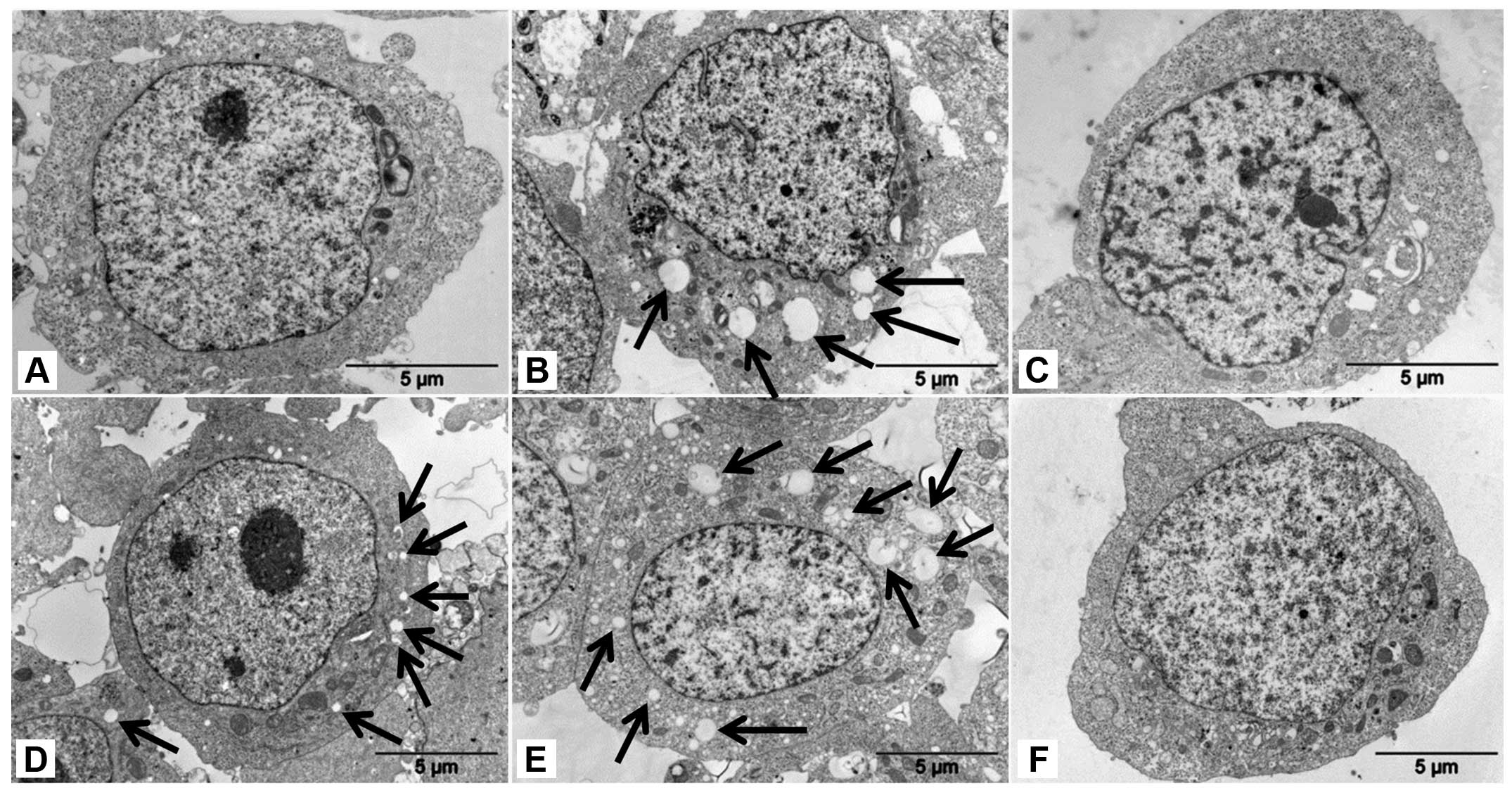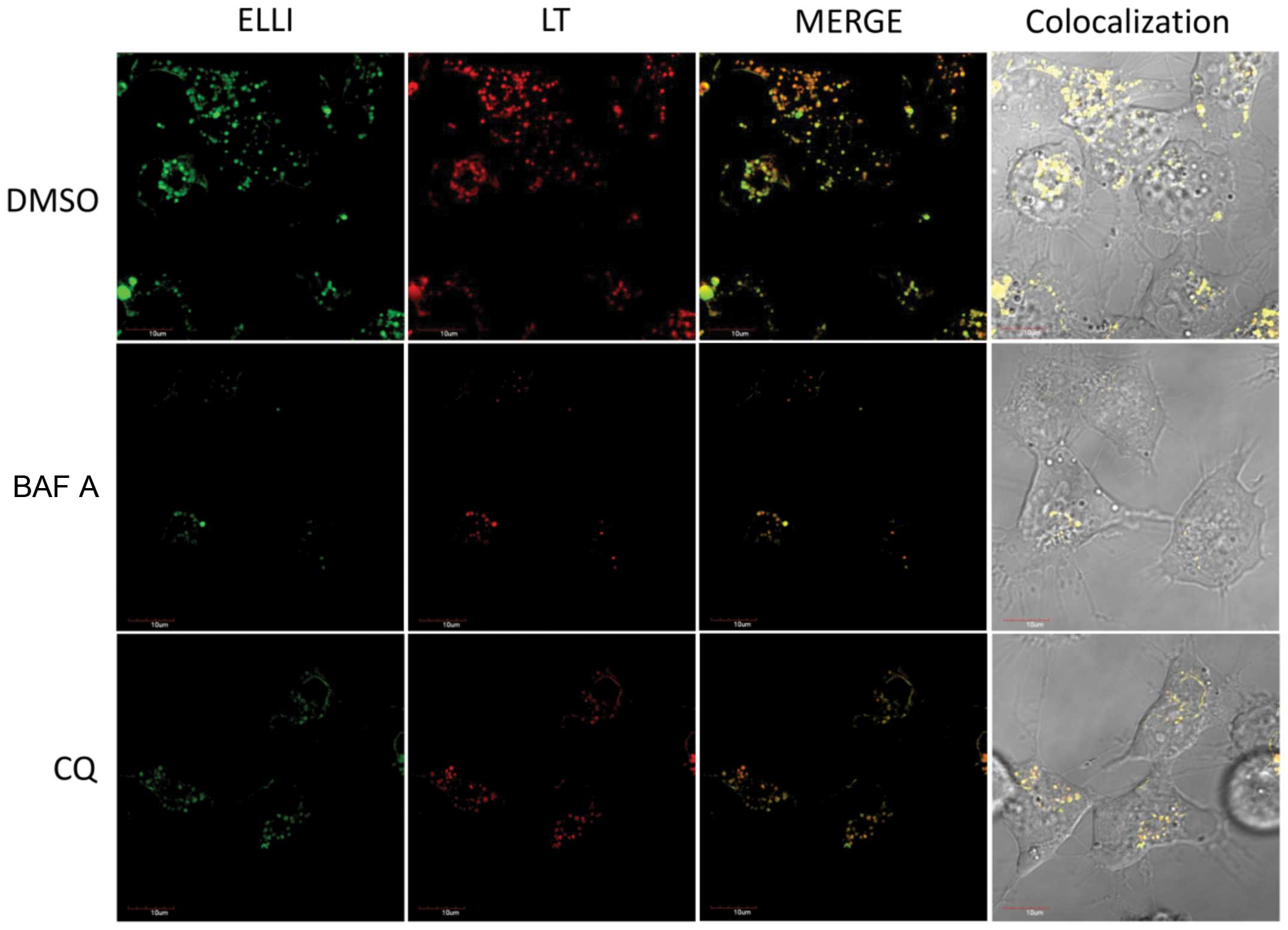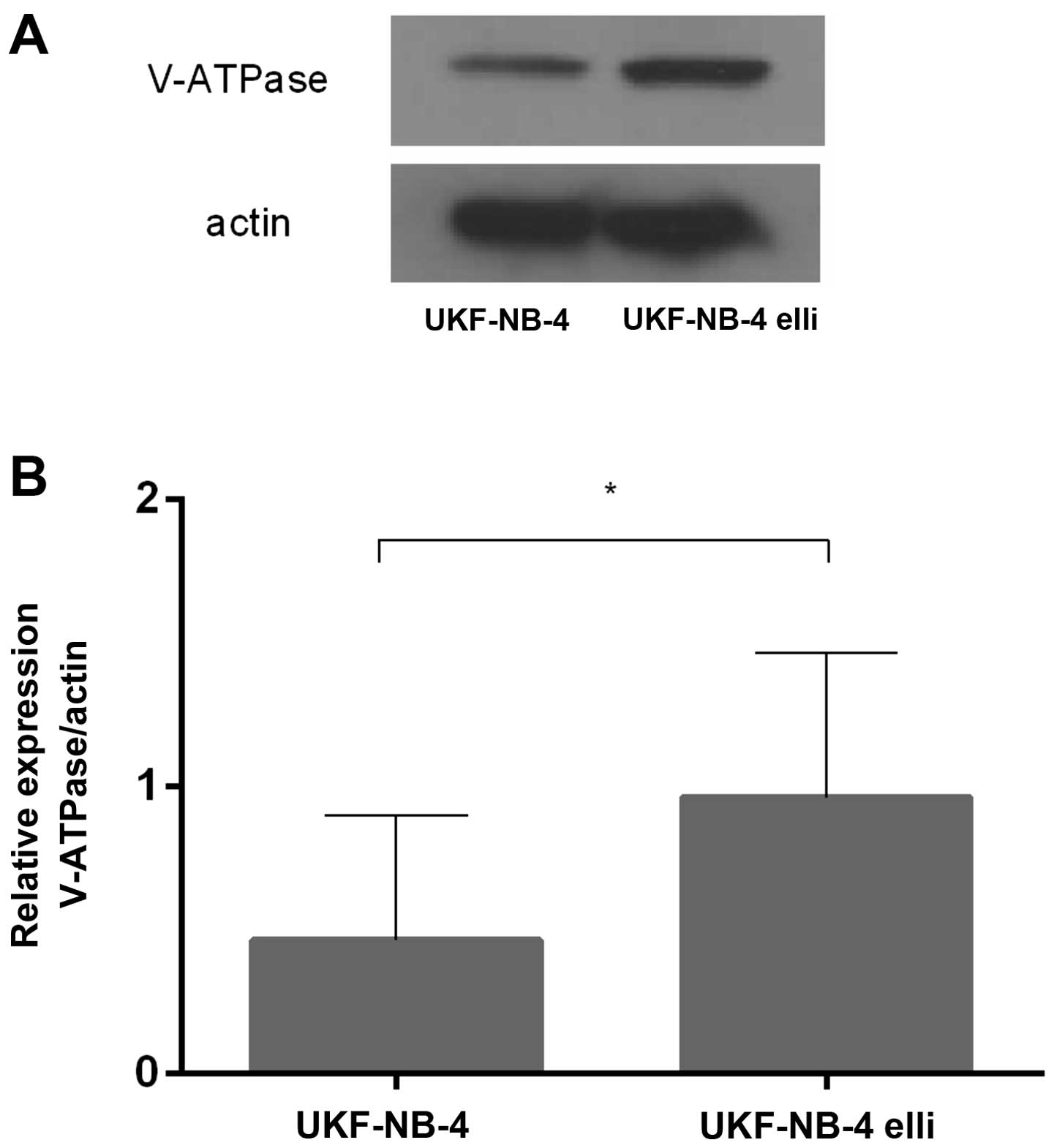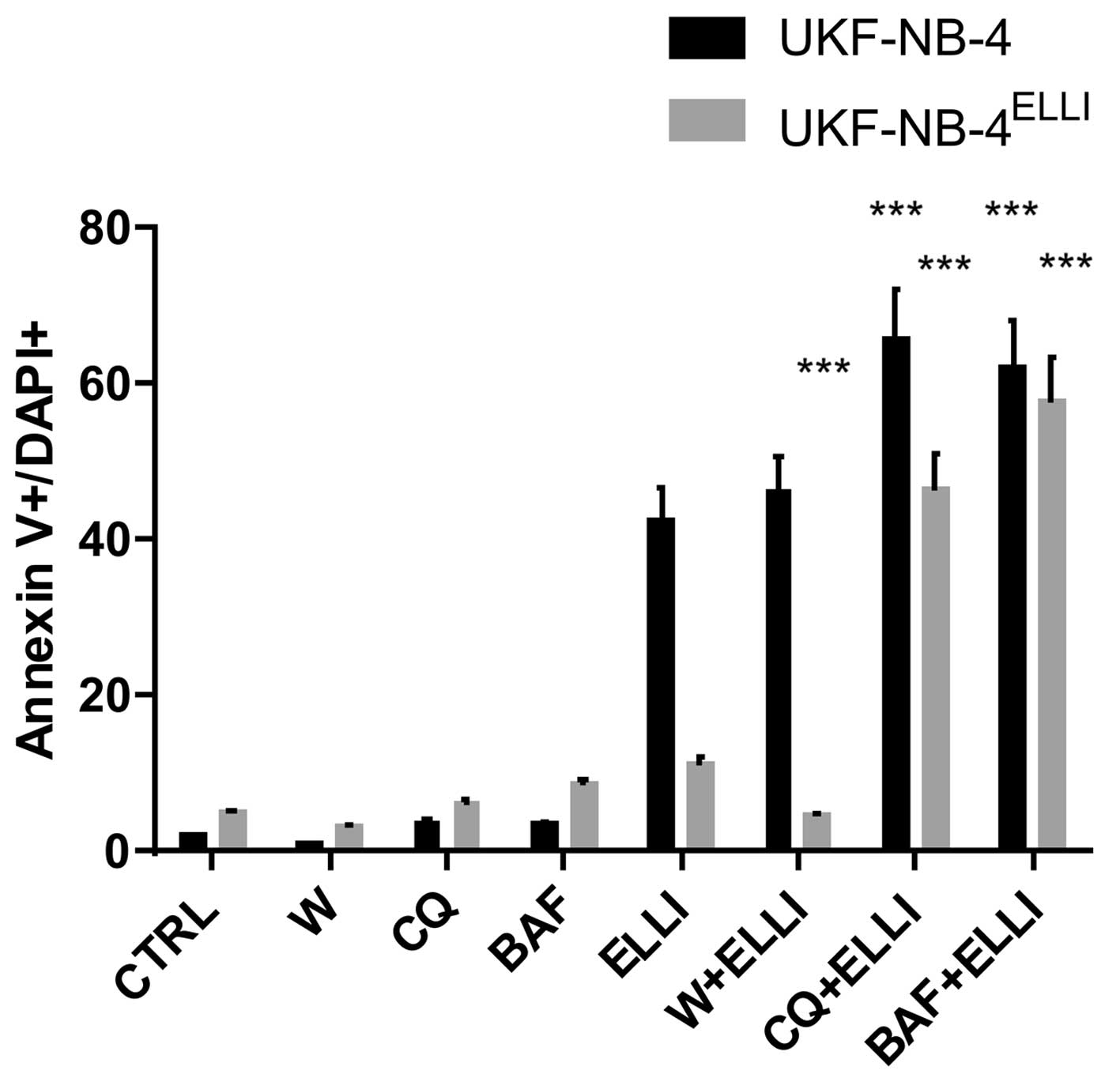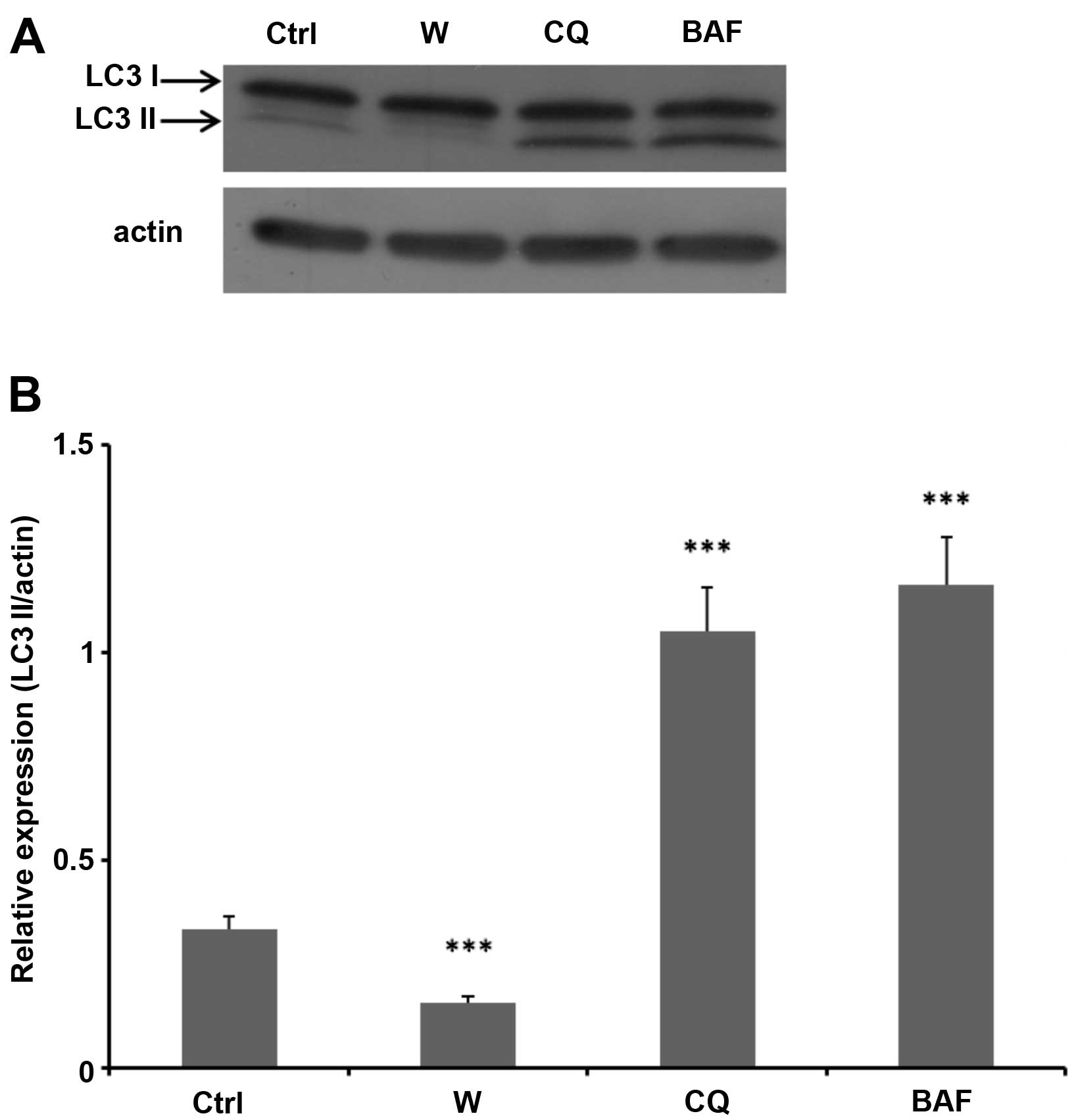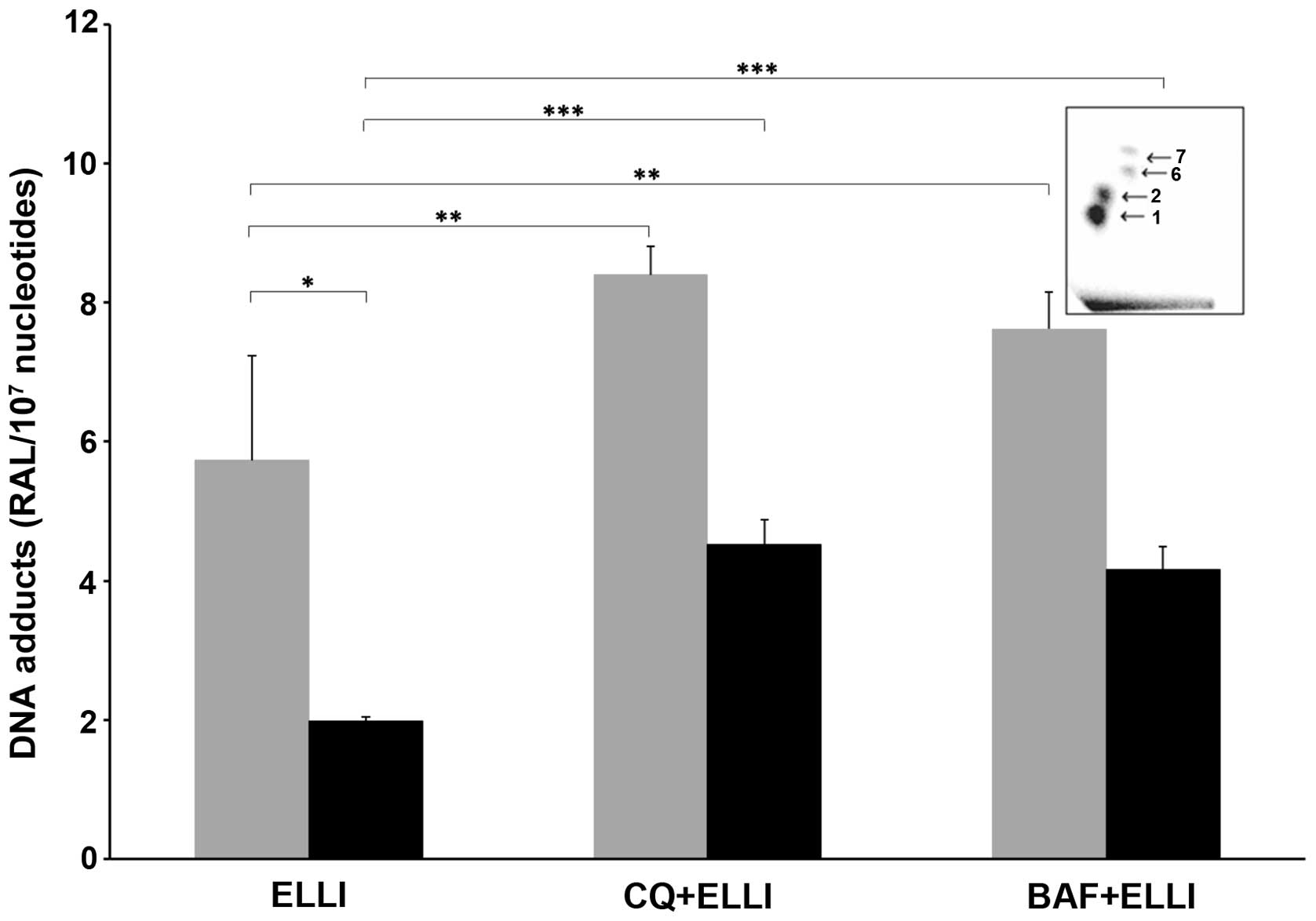|
1
|
Brodeur GM: Neuroblastoma: Biological
insights into a clinical enigma. Nat Rev Cancer. 3:203–216. 2003.
View Article : Google Scholar : PubMed/NCBI
|
|
2
|
Schwab M, Westermann F and Hero Band
Berthold F: Neuroblastoma: Biology and molecular and chromosomal
pathology. Lancet Oncol. 4:472–480. 2003. View Article : Google Scholar : PubMed/NCBI
|
|
3
|
Morgenstern BZ, Krivoshik AP, Rodriguez V
and Anderson PM: Wilms' tumor and neuroblastoma. Acta Paediatr
(Suppl). 93:78–85. 2004. View Article : Google Scholar
|
|
4
|
Kotchetkov R, Driever PH, Cinatl J,
Michaelis M, Karaskova J, Blaheta R, Squire JA, Von Deimling A,
Moog J and Cinatl J Jr: Increased malignant behavior in
neuroblastoma cells with acquired multi-drug resistance does not
depend on P-gp expression. Int J Oncol. 27:1029–1037.
2005.PubMed/NCBI
|
|
5
|
Michaelis M, Klassert D, Barth S, Suhan T,
Breitling R, Mayer B, Hinsch N, Doerr HW, Cinatl J and Cinatl J Jr:
Chemoresistance acquisition induces a global shift of expression of
aniogenesis-associated genes and increased pro-angogenic activity
in neuroblastoma cells. Mol Cancer. 8:802009. View Article : Google Scholar : PubMed/NCBI
|
|
6
|
Stiborová M, Rupertová M and Frei E:
Cytochrome P450- and peroxidase-mediated oxidation of anticancer
alkaloid ellipticine dictates its anti-tumor efficiency. Biochim
Biophys Acta. 1814:175–185. 2011. View Article : Google Scholar
|
|
7
|
Stiborová M and Frei E: Ellipticines as
DNA-targeted chemo-therapeutics. Curr Med Chem. 21:575–591. 2014.
View Article : Google Scholar
|
|
8
|
Poljaková J, Eckschlager T, Hrabeta J,
Hrebacková J, Smutný S, Frei E, Martínek V, Kizek R and Stiborová
M: The mechanism of cytotoxicity and DNA adduct formation by the
anticancer drug ellipticine in human neuroblastoma cells. Biochem
Pharmacol. 77:1466–1479. 2009. View Article : Google Scholar : PubMed/NCBI
|
|
9
|
Poljakova J, Hrebackova J, Dvorakova M,
Moserova M, Eckschlager T, Hrabeta J, Göttlicherova M, Kopejtkova
B, Frei E, Kizek R, et al: Anticancer agent ellipticine combined
with histone deacetylase inhibitors, valproic acid and trichostatin
A, is an effective DNA damage strategy in human neuroblastoma.
Neuro Endocrinol Lett. 32(Suppl 1): 101–116. 2011.PubMed/NCBI
|
|
10
|
Stiborová M, Eckschlager T, Poljaková J,
Hrabĕta J, Adam V, Kizek R and Frei E: The synergistic effects of
DNA-targeted chemotherapeutics and histone deacetylase inhibitors
as therapeutic strategies for cancer treatment. Curr Med Chem.
19:4218–4238. 2012. View Article : Google Scholar : PubMed/NCBI
|
|
11
|
Stiborova M, Poljakova J, Mrizova I, et
al: Expression levels of enzymes metabolizing an anticancer drug
ellipticine determined by electromigration assays influence its
cytotoxicity to cancer cells - a comparative study. Int J
Electrochem Sci. 9:5675–5689. 2014.
|
|
12
|
Stiborová M, Bieler CA, Wiessler M and
Frei E: The anticancer agent ellipticine on activation by
cytochrome P450 forms covalent DNA adducts. Biochem Pharmacol.
62:1675–1684. 2001. View Article : Google Scholar
|
|
13
|
Stiborová M, Sejbal J, Borek-Dohalská L,
Aimová D, Poljaková J, Forsterová K, Rupertová M, Wiesner J,
Hudecek J, Wiessler M, et al: The anticancer drug ellipticine forms
covalent DNA adducts, mediated by human cytochromes P450, through
metabolism to 13-hydroxyellipticine and ellipticine N2-oxide.
Cancer Res. 64:8374–8380. 2004. View Article : Google Scholar : PubMed/NCBI
|
|
14
|
Stiborova M, Rupertova M, Schmeiser HH and
Frei E: Molecular mechanisms of antineoplastic action of an
anticancer drug ellipticine. Biomed Pap Med Fac Univ Palacky
Olomouc Czech Repub. 150:13–23. 2006. View Article : Google Scholar : PubMed/NCBI
|
|
15
|
Stiborová M, Poljaková J, Ryslavá H,
Dracínský M, Eckschlager T and Frei E: Mammalian peroxidases
activate anticancer drug ellipticine to intermediates forming
deoxyguanosine adducts in DNA identical to those found in vivo and
generated from 12-hydroxyellipticine and 13-hydroxyellipticine. Int
J Cancer. 120:243–251. 2007. View Article : Google Scholar
|
|
16
|
Kizek R, Adam V, Hrabeta J, Eckschlager T,
Smutny S, Burda JV, Frei E and Stiborova M: Anthracyclines and
ellipticines as DNA-damaging anticancer drugs: Recent advances.
Pharmacol Ther. 133:26–39. 2012. View Article : Google Scholar
|
|
17
|
Procházka P, Libra A, Zemanová Z,
Hřebačková J, Poljaková J, Hrabĕta J, Bunček M, Stiborová M and
Eckschlager T: Mechanisms of ellipticine-mediated resistance in
UKF-NB-4 neuroblastoma cells. Cancer Sci. 103:334–341. 2012.
View Article : Google Scholar
|
|
18
|
Marshansky V, Rubinstein JL and Grüber G:
Eukaryotic V-ATPase: Novel structural findings and functional
insights. Biochim Biophys Acta. 1837:857–879. 2014. View Article : Google Scholar : PubMed/NCBI
|
|
19
|
Maxfield FR and McGraw TE: Endocytic
recycling. Nat Rev Mol Cell Biol. 5:121–132. 2004. View Article : Google Scholar : PubMed/NCBI
|
|
20
|
Goldman SDB, Funk RS, Rajewski RA and
Krise JP: Mechanisms of amine accumulation in, and egress from,
lysosomes. Bioanalysis. 1:1445–1459. 2009. View Article : Google Scholar
|
|
21
|
Coutinho MF, Prata MJ and Alves S:
Mannose-6-phosphate pathway: A review on its role in lysosomal
function and dysfunction. Mol Genet Metab. 105:542–550. 2012.
View Article : Google Scholar : PubMed/NCBI
|
|
22
|
Simon S, Roy D and Schindler M:
Intracellular pH and the control of multidrug resistance. Proc Natl
Acad Sci USA. 91:1128–1132. 1994. View Article : Google Scholar : PubMed/NCBI
|
|
23
|
Mahoney BP, Raghunand N, Baggett B and
Gillies RJ: Tumor acidity, ion trapping and chemotherapeutics. I
Acid pH affects the distribution of chemotherapeutic agents in
vitro. Biochem Pharmacol. 66:1207–1218. 2003. View Article : Google Scholar : PubMed/NCBI
|
|
24
|
Chapuy B, Koch R, Radunski U, Corsham S,
Cheong N, Inagaki N, Ban N, Wenzel D, Reinhardt D, Zapf A, et al:
Intracellular ABC transporter A3 confers multidrug resistance in
leukemia cells by lysosomal drug sequestration. Leukemia.
22:1576–1586. 2008. View Article : Google Scholar : PubMed/NCBI
|
|
25
|
Spugnini EP, Citro G and Fais S: Proton
pump inhibitors as anti vacuolar-ATPases drugs: A novel anticancer
strategy. J Exp Clin Cancer Res. 29:442010. View Article : Google Scholar : PubMed/NCBI
|
|
26
|
Yamagishi T, Sahni S, Sharp DM, Arvind A,
Jansson PJ and Richardson DR: P-glycoprotein mediates drug
resistance via a novel mechanism involving lysosomal sequestration.
J Biol Chem. 288:31761–31771. 2013. View Article : Google Scholar : PubMed/NCBI
|
|
27
|
Frei E, Bieler CA, Arlt VM, Wiessler M and
Stiborová M: Covalent binding of the anticancer drug ellipticine to
DNA in V79 cells transfected with human cytochrome P450 enzymes.
Biochem Pharmacol. 64:289–295. 2002. View Article : Google Scholar : PubMed/NCBI
|
|
28
|
Poljaková J, Frei E, Gomez JE, Aimová D,
Eckschlager T, Hrabeta J and Stiborová M: DNA adduct formation by
the anticancer drug ellipticine in human leukemia HL-60 and
CCRF-CEM cells. Cancer Lett. 252:270–279. 2007. View Article : Google Scholar : PubMed/NCBI
|
|
29
|
Martinkova E, Dontenwill M, Frei E and
Stiborova M: Cytotoxicity of and DNA adduct formation by
ellipticine in human U87MG glioblastoma cancer cells. Neuro
Endocrinol Lett. 30(Suppl 1): 60–66. 2009.PubMed/NCBI
|
|
30
|
Martinkova E, Maglott A, Leger DY, Bonnet
D, Stiborova M, Takeda K, Martin S and Dontenwill M: alpha5beta1
integrin antagonists reduce chemotherapy-induced premature
senescence and facilitate apoptosis in human glioblastoma cells.
Int J Cancer. 127:1240–1248. 2010. View Article : Google Scholar : PubMed/NCBI
|
|
31
|
Stiborová M, Breuer A, Aimová D,
Stiborová-Rupertová M, Wiessler M and Frei E: DNA adduct formation
by the anticancer drug ellipticine in rats determined by
32P postlabeling. Int J Cancer. 107:885–890. 2003.
View Article : Google Scholar
|
|
32
|
Stiborová M, Rupertová M, Aimová D,
Ryslavá H and Frei E: Formation and persistence of DNA adducts of
anticancer drug ellipticine in rats. Toxicology. 236:50–60. 2007.
View Article : Google Scholar : PubMed/NCBI
|
|
33
|
Stiborová M, Arlt VM, Henderson CJ, Wolf
CR, Kotrbová V, Moserová M, Hudecek J, Phillips DH and Frei E: Role
of hepatic cytochromes P450 in bioactivation of the anticancer drug
ellipticine: studies with the hepatic NADPH:cytochrome P450
reductase null mouse. Toxicol Appl Pharmacol. 226:318–327. 2008.
View Article : Google Scholar
|
|
34
|
Hunziker W and Geuze HJ: Intracellular
trafficking of lysosomal membrane proteins. Bioessays. 18:379–389.
1996. View Article : Google Scholar : PubMed/NCBI
|
|
35
|
Oeste CL, Seco E, Patton WF, Boya P and
Pérez-Sala D: Interactions between autophagic and endo-lysosomal
markers in endothelial cells. Histochem Cell Biol. 139:659–670.
2013. View Article : Google Scholar
|
|
36
|
Garbett NC and Graves DE: Extending
nature's leads: The anti-cancer agent ellipticine. Curr Med Chem
Anticancer Agents. 4:149–172. 2004. View Article : Google Scholar : PubMed/NCBI
|
|
37
|
Wu Y, Sadatmousavi P, Wang R, Lu S, Yuan
YF and Chen P: Self-assembling peptide-based nanoparticles enhance
anticancer effect of ellipticine in vitro and in vivo. Int J
Nanomed. 7:3221–3233. 2012.
|
|
38
|
Bowman EJ, Siebers A and Altendorf K:
Bafilomycins: A class of inhibitors of membrane ATPases from
microorganisms, animal cells, and plant cells. Proc Natl Acad Sci
USA. 85:7972–7976. 1988. View Article : Google Scholar : PubMed/NCBI
|
|
39
|
Huss M and Wieczorek H: Inhibitors of
V-ATPases: Old and new players. J Exp Biol. 212:341–346. 2009.
View Article : Google Scholar : PubMed/NCBI
|
|
40
|
Shacka JJ, Klocke BJ, Shibata M, Uchiyama
Y, Datta G, Schmidt RE and Roth KA: Bafilomycin A1 inhibits
chloroquine-induced death of cerebellar granule neurons. Mol
Pharmacol. 69:1125–1136. 2006. View Article : Google Scholar : PubMed/NCBI
|
|
41
|
Martínez-Zaguilán R, Raghunand N, Lynch
RM, Bellamy W, Martinez GM, Rojas B, Smith D, Dalton WS and Gillies
RJ: pH and drug resistance. I Functional expression of plasmalemmal
V-type H+-ATPase in drug-resistant human breast
carcinoma cell lines. Biochem Pharmacol. 57:1037–1046. 1999.
View Article : Google Scholar
|
|
42
|
Murakami T, Shibuya I, Ise T, Chen ZS,
Akiyama S, Nakagawa M, Izumi H, Nakamura T, Matsuo K, Yamada Y, et
al: Elevated expression of vacuolar proton pump genes and cellular
PH in cisplatin resistance. Int J Cancer. 93:869–874. 2001.
View Article : Google Scholar : PubMed/NCBI
|
|
43
|
Huang L, Lu Q, Han Y, Li Z, Zhang Z and Li
X: ABCG2/V-ATPase was associated with the drug resistance and tumor
metastasis of esophageal squamous cancer cells. Diagn Pathol.
7:1802012. View Article : Google Scholar : PubMed/NCBI
|
|
44
|
Wymann MP, Bulgarelli-Leva G, Zvelebil MJ,
Pirola L, Vanhaesebroeck B, Waterfield MD and Panayotou G:
Wortmannin inactivates phosphoinositide 3-kinase by covalent
modification of Lys-802, a residue involved in the phosphate
transfer reaction. Mol Cell Biol. 16:1722–1733. 1996.PubMed/NCBI
|
|
45
|
Arcaro A and Wymann MP: Wortmannin is a
potent phospha-tidylinositol 3-kinase inhibitor: The role of
phosphatidylinositol 3,4,5-trisphosphate in neutrophil responses.
Biochem J. 296:297–301. 1993. View Article : Google Scholar
|
|
46
|
Blommaart EF, Krause U, Schellens JP,
Vreeling-Sindelárová H and Meijer AJ: The phosphatidylinositol
3-kinase inhibitors wortmannin and LY294002 inhibit autophagy in
isolated rat hepatocytes. Eur J Biochem. 243:240–246. 1997.
View Article : Google Scholar : PubMed/NCBI
|
|
47
|
Tanida I, Ueno T and Kominami E: LC3 and
sutophagy. Methods Mol Biol. 445:77–88. 2008. View Article : Google Scholar
|
|
48
|
Solomon VR and Lee H: Chloroquine and its
analogs: A new promise of an old drug for effective and safe cancer
therapies. Eur J Pharmacol. 625:220–233. 2009. View Article : Google Scholar : PubMed/NCBI
|



